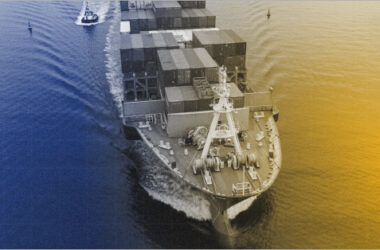In the fast-paced world of trade and transportation, businesses face countless risks—damaged cargo, lost shipments or unexpected calamities. These challenges can sink even the most prepared ventures without adequate protection. Marine Insurance indeed steps in as a savior. However, navigating Marine Insurance options can be overwhelming, and standard policies often leave gaps in coverage.
Enter the blanket policy, a solution tailored for comprehensive protection under one umbrella, ensuring peace of mind for your shipping and logistics operations. This blog will demystify what a Marine Insurance blanket policy is, how it works in India, and why it might be the safeguard your business needs to thrive amidst uncertainty.
Marine Insurance: A Brief Overview
Marine Insurance provides coverage for goods, ships, and transportation-related risks involved in moving cargo via sea, air, or land. Its purpose is to protect businesses from financial losses due to damage, loss, or delays. In India, Marine Insurance plays a crucial role in supporting the export and import industries, ensuring smoother operations for businesses relying on global trade.
Marine Insurance policies can be broadly categorised into:
A. Marine Open Insurance
- Covers goods during transit by sea, air, rail, or road.
- Offers continuous coverage for all shipments under one policy
- Protects the cargo against risks like theft, damage and loss throughout the transit journey
- Simplifies the process and saves time by ensuring seamless protection for all shipments under a single policy
B. Single Transit Insurance
- Covers a specific shipment or consignment during a single journey
- Offers financial protection against risks such as damage, loss or theft of goods during the journey from the starting point to the final destination
- Ideal for shipping companies and vessel owners who ship goods occasionally and do not need continuous coverage.
C. Sales Turnover Policy
- Here, businesses insure their estimated annual sales turnover, which becomes the sum insured.
- Ensures coverage for all transits needed to achieve this estimated turnover
Premiums are calculated based on the total sales turnover, offering cost-effective coverage for all transits.
While these policies provide specific coverage, they may not address the broader needs of businesses managing frequent or large-scale shipments. This is where blanket insurance policies become relevant.
What is a Blanket Policy in Marine Insurance?
A Blanket Policy in Marine Insurance provides comprehensive coverage for multiple shipments under a single policy. Unlike specific policies that cover individual shipments, a Marine Insurance Blanket Policy encompasses all cargo movements within a defined period, often a year. This eliminates the need to insure each shipment separately, simplifying the process for businesses involved in frequent trade.
Key Features of a Marine Insurance Blanket Policy
- Broad Coverage: It covers all shipments within the policy term without the need for separate declarations.
- Predefined Terms: Coverage, limits, and premium rates are agreed upon upfront.
- Customisable: The Blanket Insurance policies can be tailored to suit business needs, covering diverse goods and transit modes.
- Efficient Claims Process: Streamlined claims handling due to standardised terms.
For example, a logistics company in Mumbai shipping goods across international waters can insure all its shipments under a single blanket policy instead of purchasing separate policies for each consignment.
Benefits of Marine Blanket Insurance Policies
- Comprehensive Coverage and Protection: A Blanket Policy ensures uninterrupted coverage for all shipments during the policy period, reducing the risk of uninsured cargo. This is particularly beneficial for businesses handling frequent shipments.
- Cost Efficiency: Consolidating the coverage under one Marine Insurance Policy reduces administrative expenses and can result in lower premium rates compared to insuring shipments individually.
- Simplified Administration: Managing a single policy is easier than tracking multiple ones. Businesses save time on paperwork, declarations, and renewals.
- Flexibility: Blanket Insurance policies can accommodate various types of cargo, transportation modes, and routes, offering greater adaptability for businesses with diverse shipping needs.
- Improved Cash Flow Management: Premiums are often calculated based on an estimated annual turnover, providing predictable costs and better financial planning.
How Does a Blanket Policy Work in India?
In India, Blanket Insurance policies are widely used by exporters, importers, and logistics companies. Here’s how they work:
A. Eligibility Criteria
Businesses involved in regular shipping activities, such as manufacturers, wholesalers, and logistics providers, are typically eligible. Insurers assess factors like shipment volume, cargo type, and risk exposure before offering a Blanket Marine Insurance Policy.
B. Policy Issuance
- Proposal Submission: The business submits a proposal outlining its shipping activities, estimated annual turnover, and cargo details.
- Underwriting: The insurer evaluates the risk profile and determines the coverage terms, premium rates, and exclusions.
- Agreement: Once terms are agreed upon, the policy is issued, covering all shipments within the specified period.
C. Premium Calculation
Premiums are usually based on:
- Annual shipping turnover.
- Type and value of cargo.
- Geographical areas of transit.
- Historical claims data.
Factors to Consider When Choosing a Blanket Policy
When selecting a Blanket Marine Insurance Policy, businesses should evaluate the following:
- Coverage Scope: Ensure the policy covers all potential risks, including natural disasters, piracy, and accidental damage.
- Exclusions: Understand what is not covered, such as inherent defects in goods, delays, or negligence.
- Policy Limits: Verify the maximum coverage amount and ensure it aligns with your shipment values.
- Premium Rates: Compare premiums across insurers to find the best value for your coverage needs.
- Claims Process: Opt for insurers with a reputation for efficient claims handling and customer support.
Challenges and Limitations of Blanket Policies
While Blanket Marine Insurance policies offer significant advantages, they are not without challenges:
- Risk of Underinsurance: Estimating the annual shipping turnover inaccurately can lead to inadequate coverage or additional premium adjustments.
- Higher Initial Costs: Businesses with infrequent shipments might find the upfront cost of a blanket policy less economical than specific policies.
- Complexity in Customization: Tailoring a blanket policy for diverse needs can be complex and time-consuming.
- Exclusions and Conditions: Misunderstanding the policy exclusions or conditions can result in denied claims.
Case Studies and Practical Examples
Case Study 1: Exporter’s Success Story
A textile exporter based in Gujarat ships goods to Europe and North America regularly. Initially, the company purchased individual policies for each shipment, incurring significant administrative costs and delays in claims processing. After switching to a Blanket Marine Insurance Policy, they:
- Reduced insurance costs by 15% annually.
- Streamlined their operations, saving over 50 hours of administrative work per quarter.
- Enhanced cash flow predictability due to fixed premium payments.
Case Study 2: Logistics Provider’s Risk Mitigation
A logistics company in Chennai managing multimodal transport faced challenges with inconsistent coverage across different routes. By adopting a Blanket Policy:
- They achieved consistent protection for all shipments, regardless of mode or destination.
- Claims processing time was reduced by 30%, improving client satisfaction.
Legal and Regulatory Framework Governing Marine Insurance in India
The Marine Insurance sector in India is governed by the Marine Insurance Act, 1963, which outlines the rights and obligations of insurers and policyholders. Key aspects include:
- Insurable Interest: The policyholder must have a financial interest in the cargo being insured.
- Utmost Good Faith: Both parties are required to disclose all material facts honestly.
- Indemnity Principle: The policy compensates for actual losses, ensuring no profit is made from claims.
Businesses must also comply with specific documentation and customs regulations to ensure seamless claims processing.
Final Thoughts
A Blanket Marine Insurance Policy offers businesses a practical and efficient way to protect their shipments. By consolidating coverage, it minimises risks, reduces costs, and simplifies administration. In India’s dynamic trade environment, adopting a Blanket Policy can be a strategic move for exporters, importers, and logistics providers. Take the time to evaluate your business needs, consult with insurance experts, and choose a policy that ensures comprehensive protection for your operations.







